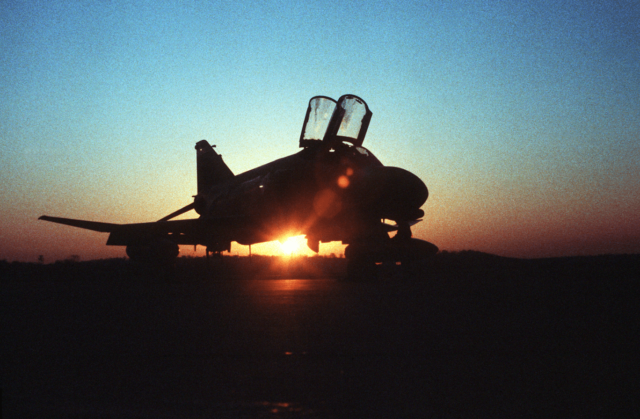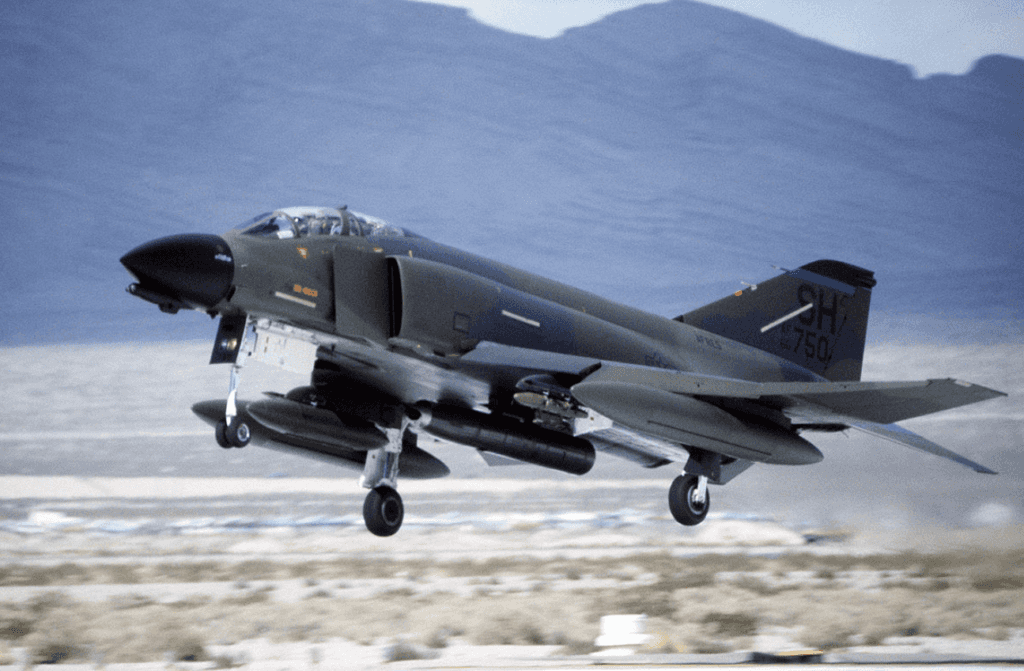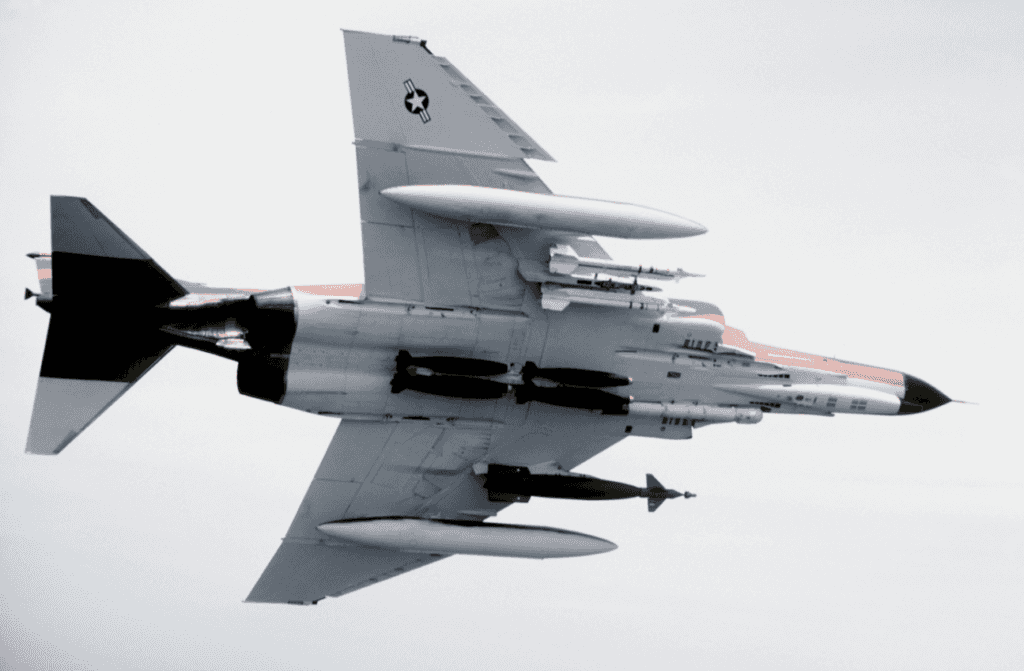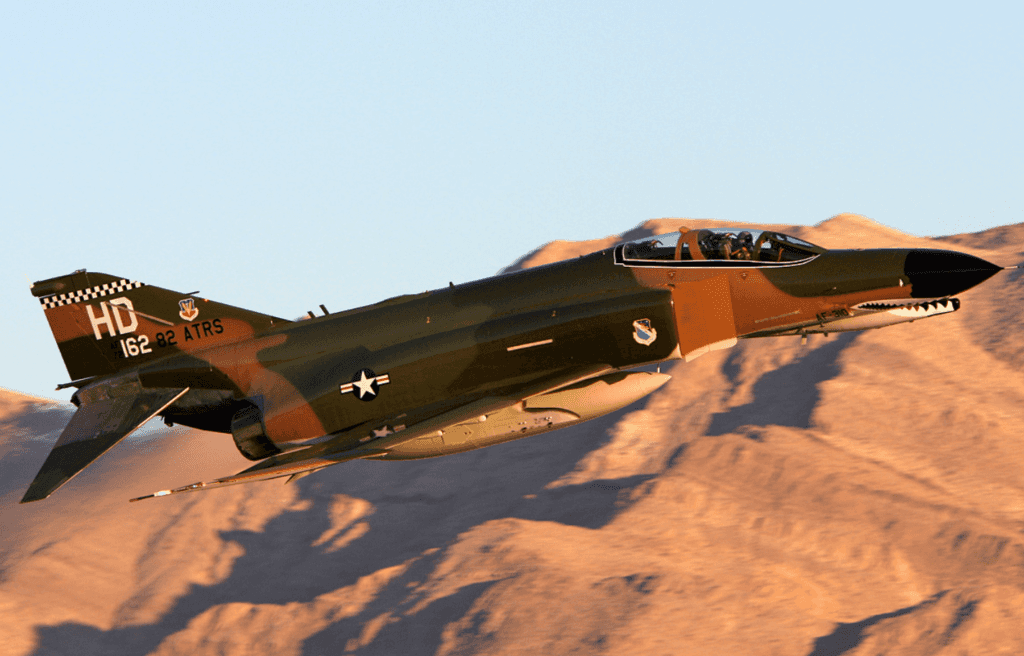
Ret. Air Force Weapons School instructor details near-death fighter jet crash for his ‘Glad To Be Alive Day’ An F-4 Phantom. (Photo by SSGT John Blackburn, Combined Military Service Digital Photographic Files/Released)
On May 5, 1983, Mark Thibodeau was sitting in the backseat of a U.S. Air Force F-4 Phantom fighter-bomber for an air combat training exercise when a mishap sent his aircraft crashing down to earth while he escaped with approximately one second to spare. Thibodeau now commemorates May 5 every year as his “Glad To Be Alive” Day.
In an interview with American Military News, Thibodeau told the story of how he and front-seat pilot J.D. Allen were forced to eject after running into another fighter jet’s wake turbulence. Thibodeau was trained as an F-4 backseat navigator and was assigned to the U.S. Air Force Fighter Weapons School at Nellis Air Force Base as an instructor at the time.

Thibodeau explained that his and three other fighter jets were going out to perform a training exercise known as a “one to the fourth,” a scenario where four different fighter jets engage in a free-for-all air-to-air combat simulation where every aircraft involved is up against one another. The fighter jets in these types of scenarios simulate air-to-air kills by getting a radar lock on an enemy aircraft while flying within the effective range of the particular missile systems they are trained to carry.
“My front seater and I, we went to a northern corner of the [training area] and started working our way around the edges of the working area at the minimum flight altitude,” Thibodeau said. “We picked off one of the other aircraft, got a valid radar missile shot on him and then proceeded around the circle if you will, or around the edge of the area and spotted another one of our flight mates ahead of us.”
Thibodeau said Allen called for him to switch the radar to its “boresight” mode, which would be used to simulate an air-to-air kill. As Allen turned the nose of their F-4 towards their next target, their radar sight set off the opposing F-4’s radar warning system and the opposing pilot “turned back hard into us and basically started a head-on pass and we were too close at that point for radar missile.”
Thibodeau said Allen’s next move was to pass close to the other aircraft going in the opposite direction. The rules for the training scenario dictated that each aircraft would give each other a 500-foot “hard-bubble” of space so as to avoid collisions. Thibodeau said his aircraft maintained that “hard bubble” rule and passed close but “not dangerously close.”
In an effort to get back into a position where their aircraft could try to line up another simulated missile shot, Thibodeau said his pilot turned hard to get behind the opposing aircraft.

“We passed him and proceeded to put about six Gs on the jet,” Thibodeau said, referring to pulling a turn equivalent to about six time’s earth’s gravitational pull.
As their aircraft turned hard to get behind the opposing F-4, they crossed behind its flight path and went through the aircraft’s wake turbulence or “jet wash.” The opposing F-4 was also performing a six G turn, “so when we went through the jet wash it was pretty violent and eventually it fractured the left wing on our aircraft.”
The turbulence and damage to the wing of Thibodeau’s F-4 caused it to begin spinning in aileron rolls. Thibodeau said he lost track of the total number of times their aircraft rolled. He said “I was concerned with other things at the time” but guessed that they spin three or four times and “maybe more.”
The scenario Allen and Thibodeau experienced is not too different from the one depicted in the 1986 film Top Gun, in which the main character Maverick flies an F-14 Tomcat through the “jet wash” of another F-14 and begins spinning out in a series of aileron rolls that devolve into a flat spin.
Thibodeau said Top Gun’s portrayal of the scenario “was very badly done.” Other than the glaring inaccuracy of fighter pilots flying around with their oxygen masks dangling off their faces, Thibodeau said the character Goose’s death after hitting the F-14’s canopy during the ejection process is “almost physically impossible.”
“The way the seat is set up, it can’t go until the canopy is clear,” he said. “So that was a complete Hollywood-ism.”
Thibodeau said the characters in the film put their aircraft out of control and should have been able to recover it in their specific scenario.
In his real-life case, Thibodeau said Allen “almost had the rolls stopped” when he tried to raise the nose of their aircraft, causing them to go back into the uncontrolled spinning.
“The aircraft went back into the uncontrolled roll,” Thibodeau said. “At which point I was looking the quarter panel from the backseat and I could see rocks, could see the ground coming right up at us. At that point, I initiated my ejection.”
Thibodeau and Allen were able to eject from their aircraft as it went down. Thibodeau ejected out of the aircraft at a sideways angle.
Thibodeau said investigators later determined he had ejected with about 1.3 seconds before he would have missed the opportunity to bail out. Allen had about 0.7 seconds. “So it was a close shave.”
“I had a couple seconds in the chute and was about three thousand feet above ground when I went out and started trying to get ready to land in the parachute,” Thibodeau said. “And I looked down and saw the fireball between the toes of my boots. And that was not a good thing, so I kind of tried to turn the chute away.”
Thibodeau avoided the main burning wreckage of the crash, but “had pieces of burning airplane around me.”
Allen also survived his landing but injured his knee in the process. The pair were still able to meet up on the ground and walk to a helicopter to be evacuated. Thibodeau said Allen ultimately had to undergo surgery for his knee injury.

After retiring from the Air Force, Thibodeau went on to work as a contractor overseeing the Air Force’s “Red Flag” aerial combat training exercise at Nellis Air Force Base. He now treats every May 5 as the anniversary of the day he survived a fighter jet crash and typically commemorates the day by bringing in pizza for his coworkers and then relaxing at home with a glass.
Thibodeau said the precise cause of the accident and how long it took for investigators to figure out exactly what happened was “unusual” but otherwise “there’s guys that have a lot more spectacular stories than I do.”
American Military News reached out to the Air Force Inspection and Safety Center, which oversees the service’s mishap investigations, but it was not able to provide more information about the crash.
The Aviation Safety Network has documented the 1983 crash, but provides virtually none of the details Thibodeau was able to speak to from his direct experience.




